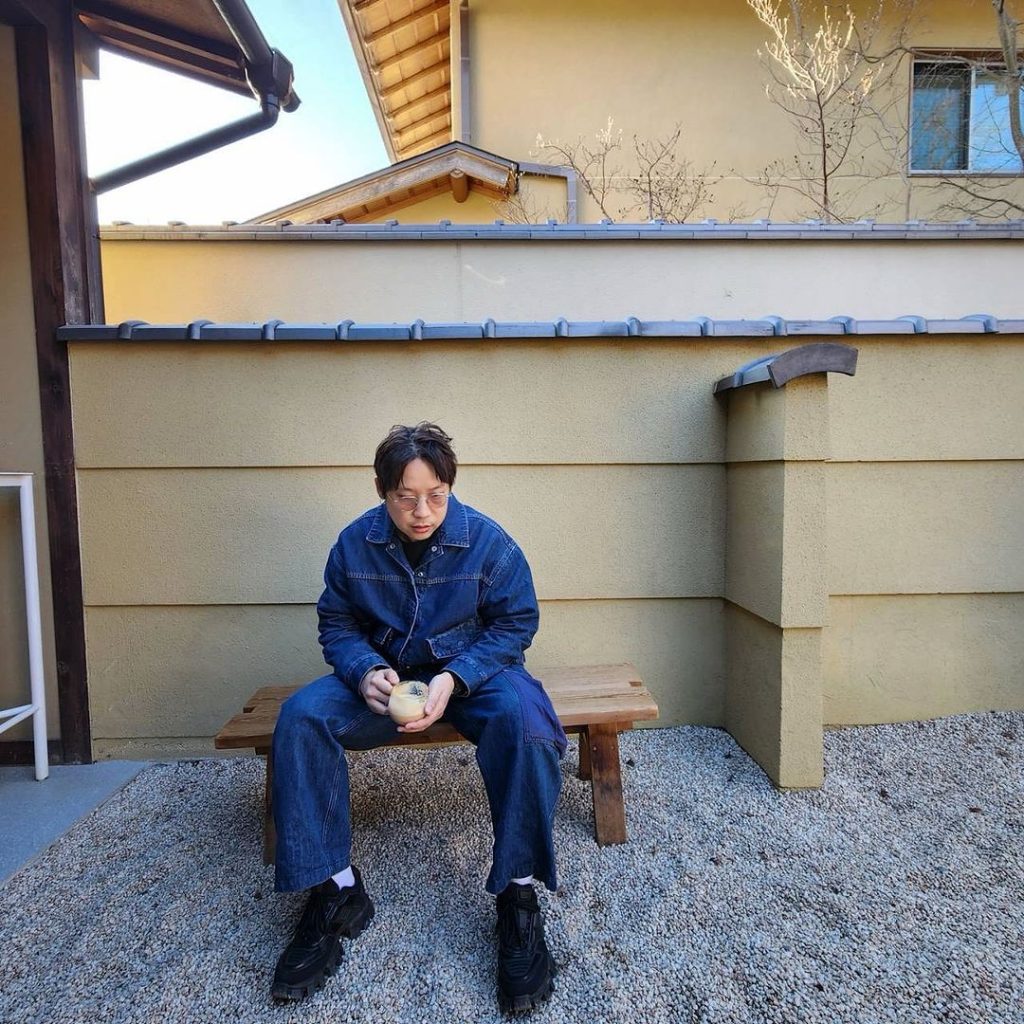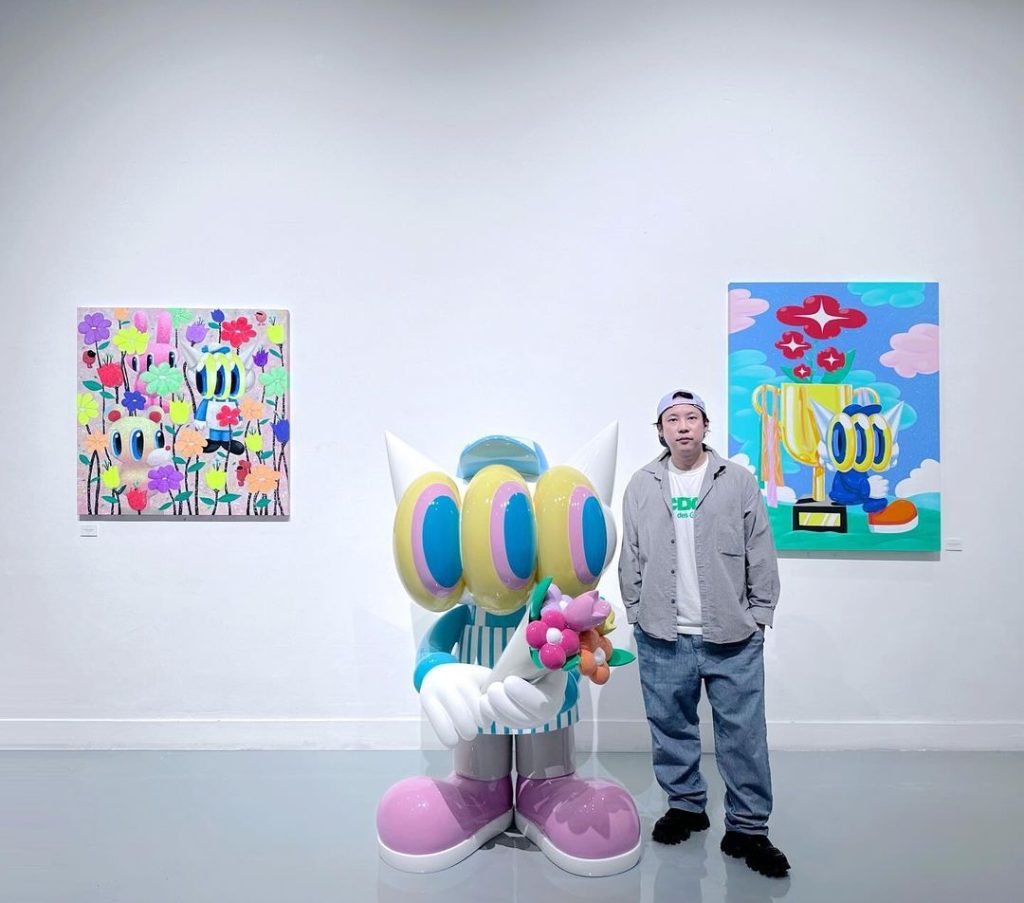Early influences from television and video game character design
Culture Cartel: You work across quite a few mediums. How does Thailand and this whole Southeast Asia region influence your work?
Benzilla: I don’t think much about nationality or location because I’m inspired by television. So my role models are from overseas, like US or Japan. Thailand for me is just a place to live. When I was young, there was not much art. It was just school, home and playing with friends.
I was influenced by some video games because it’s easier to buy cheap video games without copyright. That’s how I started to explore drawing, from my interest in video games.

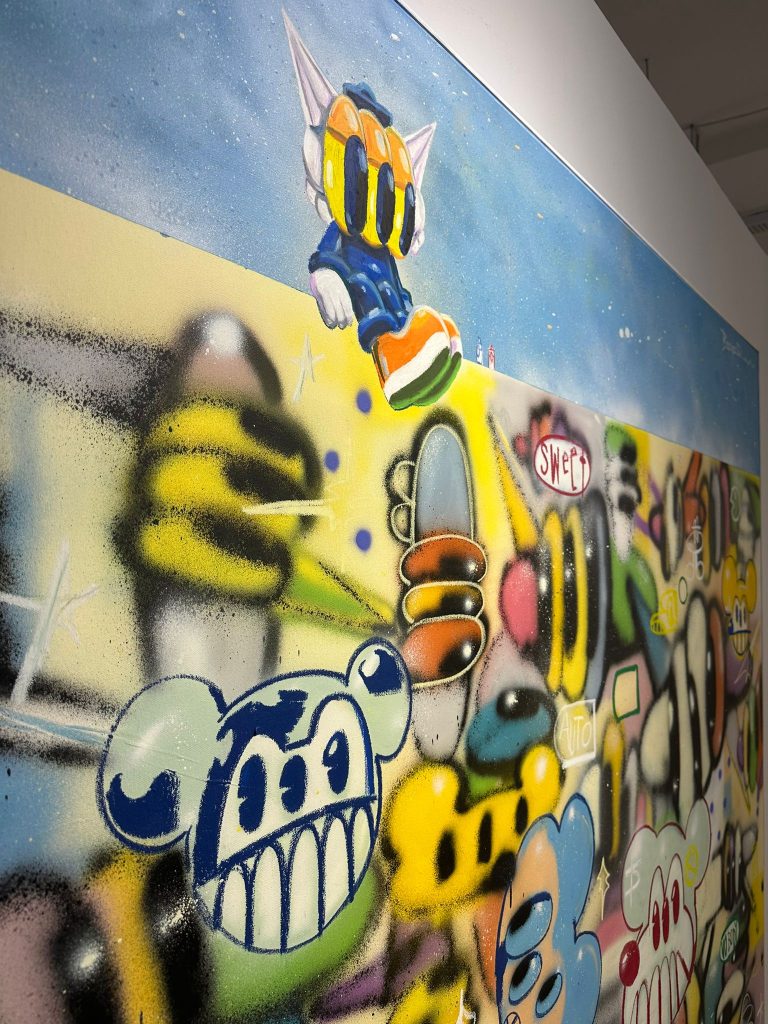
Culture Cartel: What were some of your favorite video games when you were growing up?
Benzilla: At that time, it’s maybe like Street Fighter or Rockman, mostly Japanese games.
Culture Cartel: Which was your favorite characters from Street Fighter?
Benzilla: Maybe Akuma because he was the bad guy. But I’m not as interested in playing the game, I’m interested in the character design. And Akuma has the most fascinating backstory for his character.
Culture Cartel: How did your early interest in character design evolve into your art today? Is there any way people look at your art see influences from character design there?
Benzilla: I drew a lot with my friends from a young age and I was the only one who can draw like a mini proportion, like SD (Super Deformation). My other friends can draw very cool characters, but I cannot. I just drew cute characters.
I don’t know why, but that is how I started making art. I drew cute things. So maybe simplified characters or stylized…
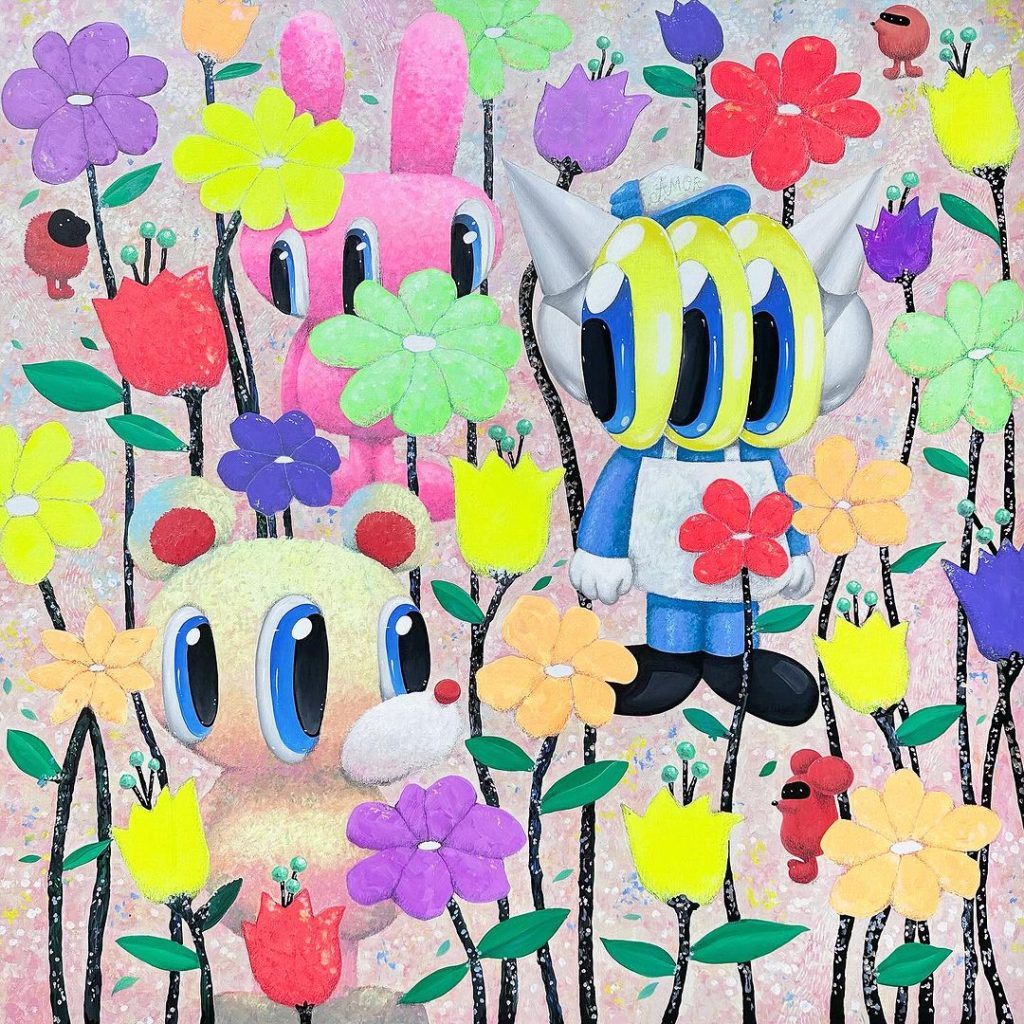
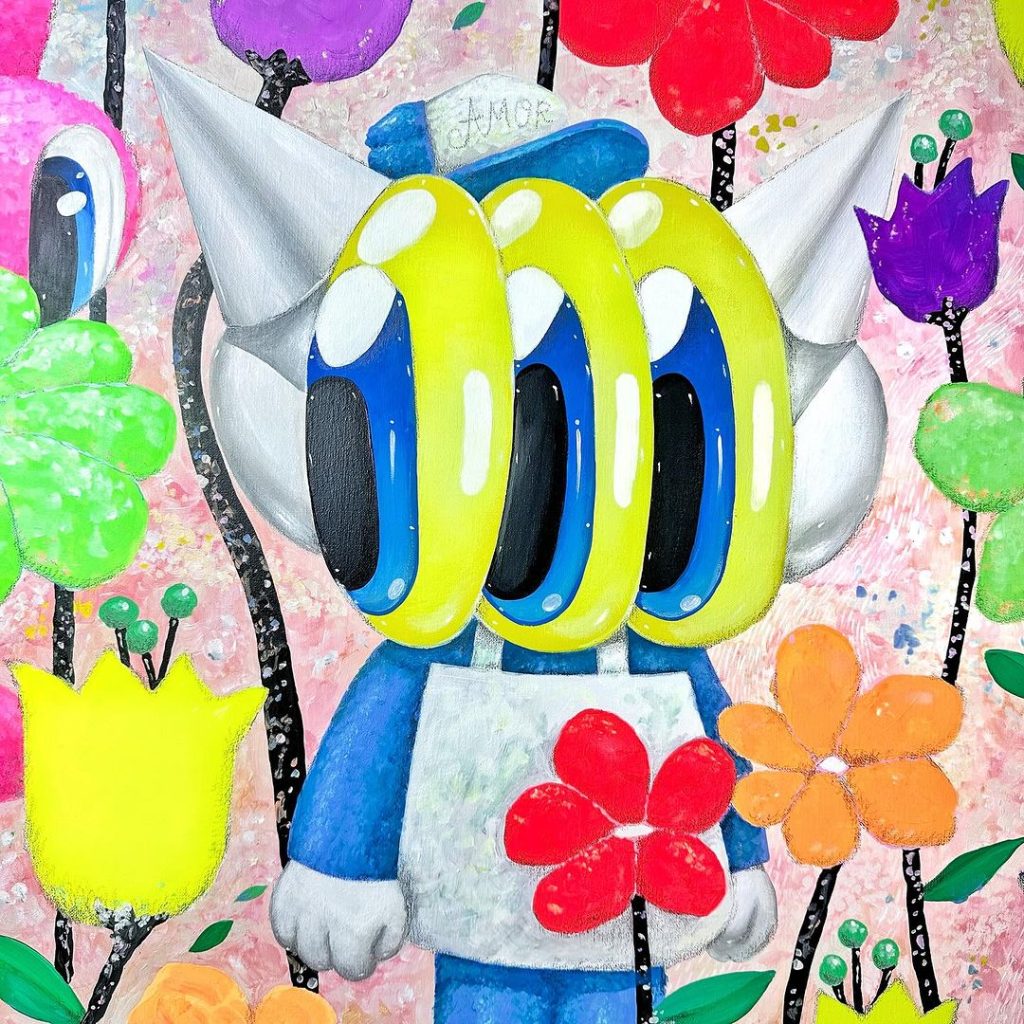

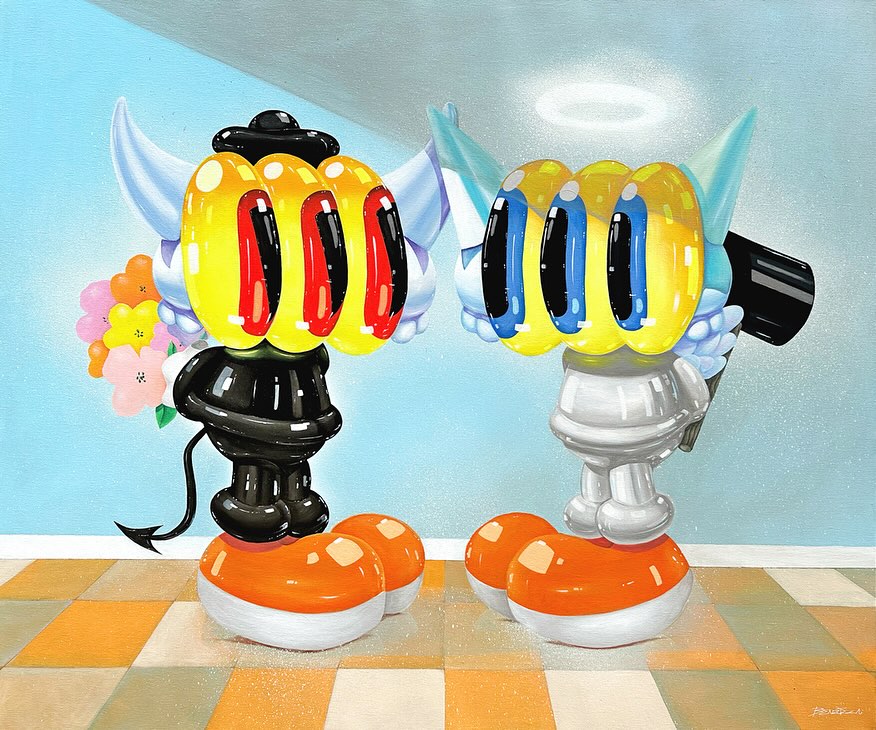
The importance of not being “too serious” about making art
Culture Cartel: How would you describe the local street culture or streetwear scene in Thailand?
Benzilla: It’s very popular in Thailand and mainstream now. Everybody’s wearing sneakers and it’s great. I’m from the skateboarding scene back when it was a small group of people who liked hip hop music or street fashion.
Now it’s growing and people can understand what I’m doing and there’s alot of room to explore in street art. If I did the same idea 10 years ago nobody would understand, but now it can happen.
Culture Cartel: When there was a smaller audience and less people understood what you were doing, what made you keep making art?
Benzilla: Maybe because I love it, that’s all. Art is like, do what you love right? It’s not a real job. It’s between a job and a hobby so I don’t make it serious. I’m just playing with creative ideas.
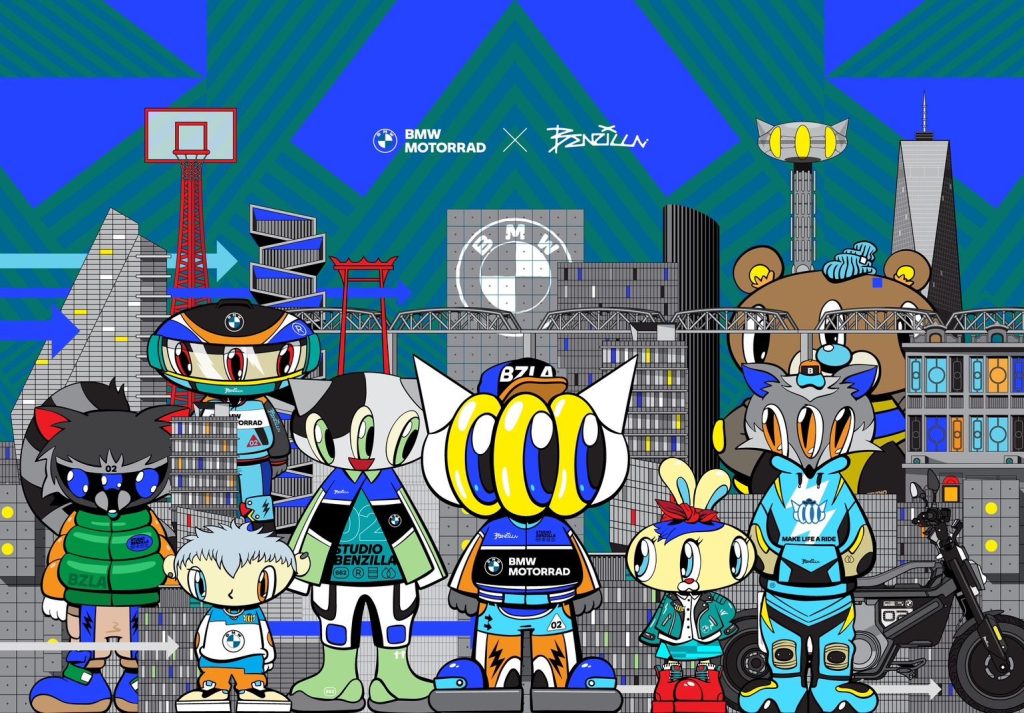
Why followers are just a number, and not the truth
Culture Cartel: I do feel a lot of joy coming from your work. Nowadays a lot of artists might feel discouraged that they’re not getting a lot of viewers or they might feel all they might feel pressure to have alot of followers. What would you say to them if they feel like they have to have a very big audience?
Benzilla: It’s a good question. For me, follower numbers is nothing, it’s just a number.
Because I worked in advertising agencies before, I know the number of followers is part of decision for the client, but it’s not the truth. The truth is how good is your work and how you connect with your audience. Followers are just a number.
But this generation has grown up with social media, so it’s hard to not compare yourself with others. But that does not help. I think just focus your lane.
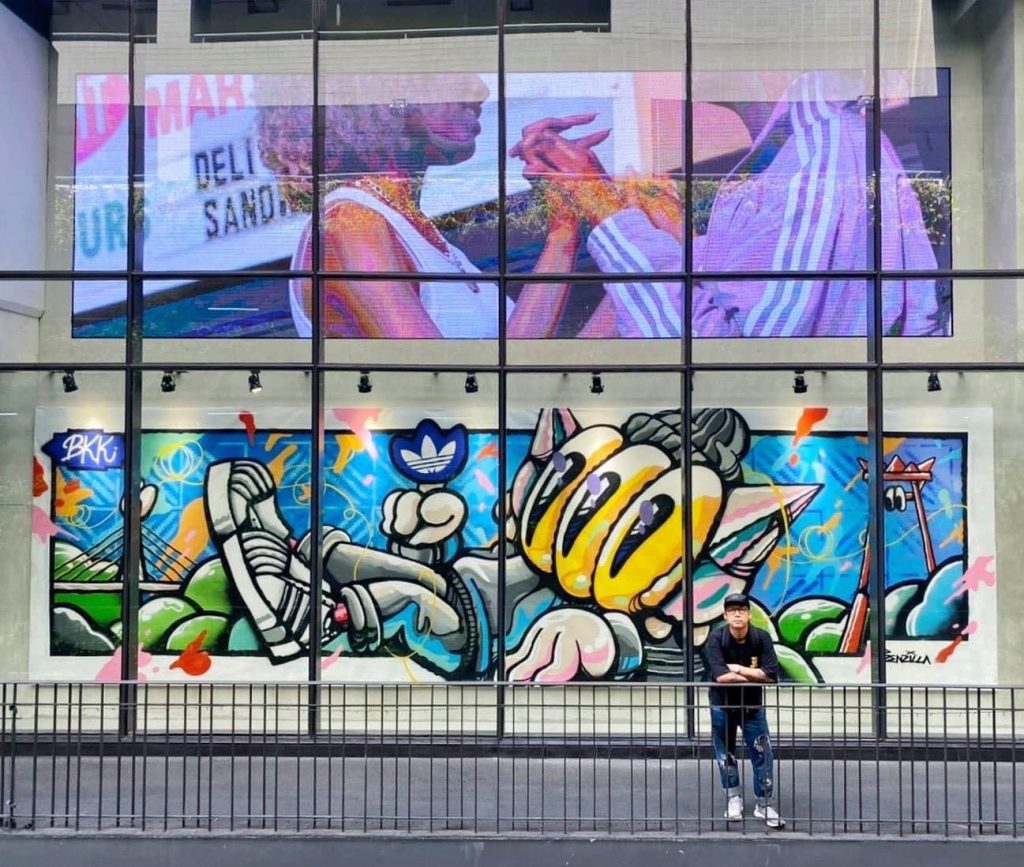
Culture Cartel: Do you feel artists growing up in the younger generation (because there’s so many other artists out there), that their voice is drowned out? Because it’s tempting to copy other styles or just make things heavily inspired by other people.
Benzilla: Maybe they didn’t have intention to copy, but are influenced by seeing on social media. Just like I watched television back then. I drew because I was watching and playing video games alot.
Maybe there is a line here. Once you get over 10,000 hours, then you know what you want to do and you can grow from this.
Culture Cartel: So they just need to have faith that if they put in the work, then eventually something unique will appear?
Benzilla: Unique is hard to say, very abstract. But what is unique these days anyway? There’s nothing new under the sun.
Culture Cartel: Maybe a lot of inspiration is good because it creates more creative combinations. And that’s where new things come when you remix or jam with other influences.
Benzilla: For me, art is like cooking. It’s nothing new. Ingredients are meat and vegetable, right? So it’s learning how to mix, artists are always mixing.
Balancing yourself as an artist + the brief in brand collaborations
Culture Cartel: Since we’re talking about mixing, you’ve had alot of brand collaborations. Do you have any advice for artists or designers? Are there things they need to be careful of and are there good things as well about brand collaborations?
Benzilla: I have to say I’m the opposite because I started from collaborations before fine art because I worked in the advertising industry before. So working with brands is my natural environment, it’s easy to understand the brief or the client. But it’s about balancing yourself and the concept of the work. Concept is made of “you” plus “brand” right? That’s the message.
If you have a very strong personality, but this personality is not matched with the mass audience like our mom, our dad, like all neighbourhood. It’s for an audience, not an art collector. It’s very different.
In my case, I’m trying to look from the others’ point of view, but try not to lose myself at the same time. It’s about balancing.
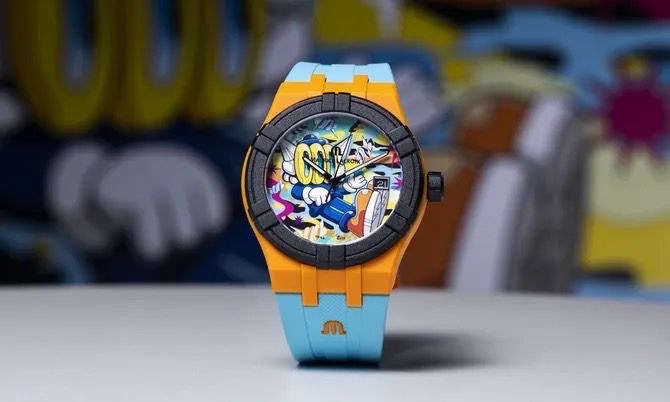
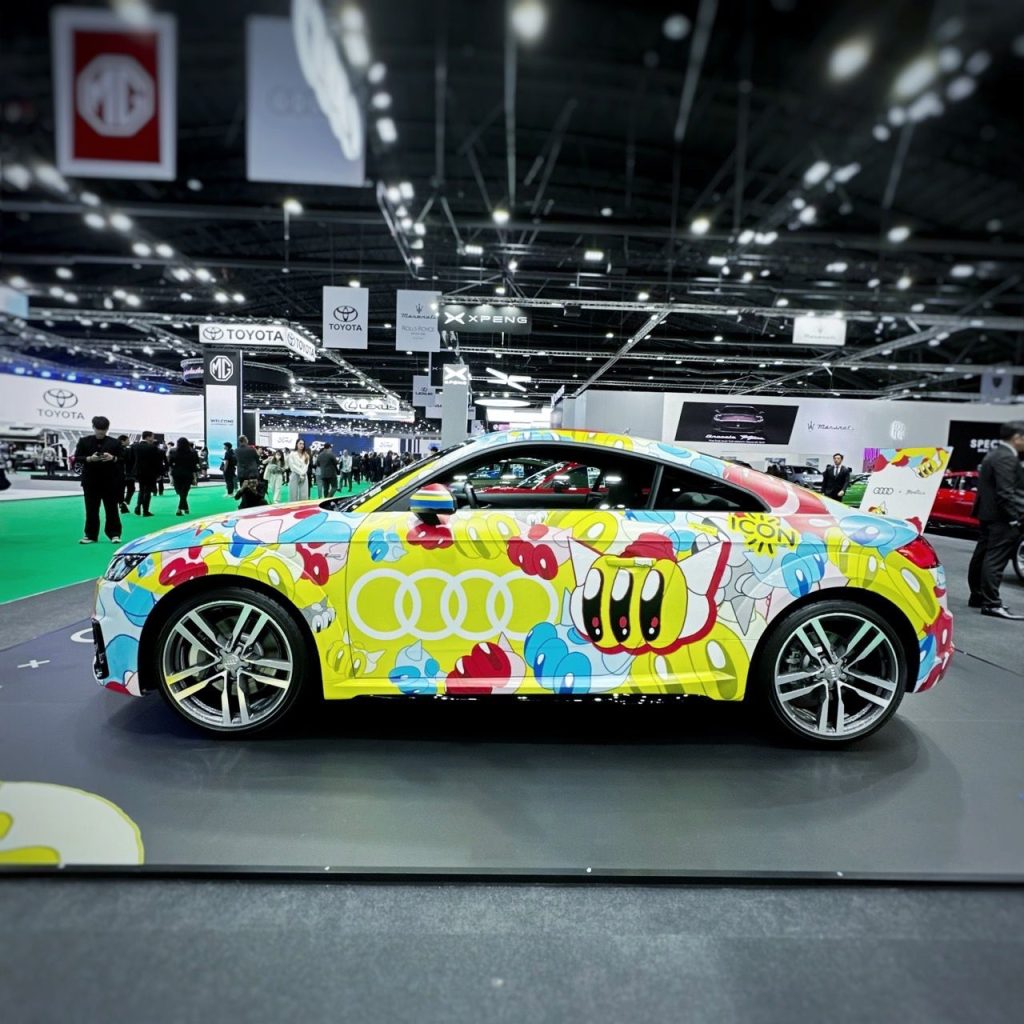
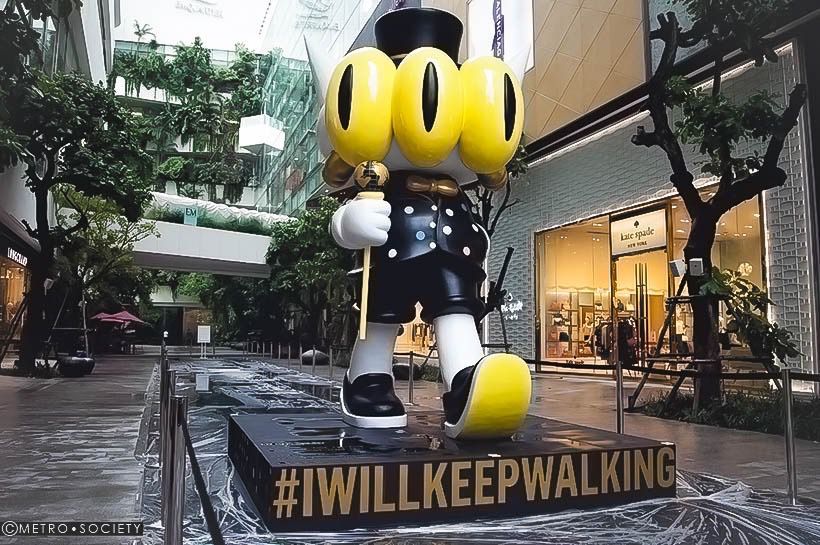
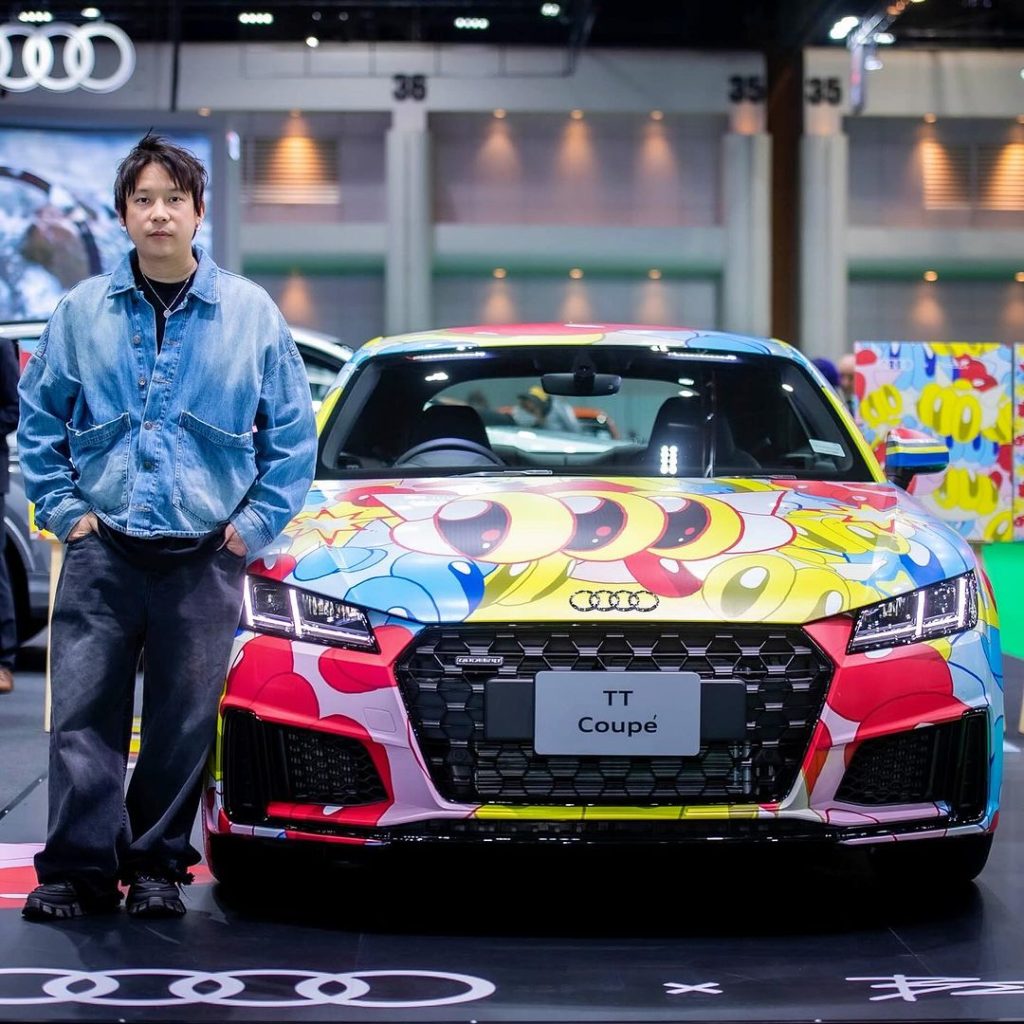
Culture Cartel: Do you think it’s hard for artists to say no to a brand collaboration that might like not match or not be a good fit?
Benzilla: If you feel like it’s not a match, you have to cancel. Don’t do it. Because it’s not good for yourself or the client. Maybe the marketing team comes to artists, and they’re looking from the outside.
But for the deep concept, you would have to talk to see if artists and client feel the same, to see if it’s a good match. If you go by gut feeling… I don’t know how to describe it, but you can tell.
What makes a good brand collaboration for an artist
Culture Cartel: Yeah, usually we can sense if it’s not the right match or the right fit so okay, don’t do it. Good advice. What are some favourite collaborations that you have done with brands?
Benzilla: I like to work with brands that are open and give me freedom. I’ve worked with Adidas many times and it’s a good match because I like sneakers, so it’s very natural for me.
For now I’m working with another kind of brand, BMW but it’s for motorcycles. I don’t ride motorbikes, but I love the design so I try to learn about the characteristics of the brand and combine my work. I have to find new ways for my creativity to match with the concept.
Culture Cartel: Do brands usually have a concept in mind, or do you help them develop a concept?
Benzilla: When clients come to me, they expect what I normally do, so my style already matches with their concept.
I just finished my work with a luxury brand last week, actually, the branding is very different from what what I’m doing, but the brand is looking for fresh ideas from another artwork style.
So for me, it’s very exciting to be in an uncomfortable area. We try to learn each other. So it’s okay. It’s fun.
When being uncomfortable is a good thing for creativity
Culture Cartel: How do you know when it’s uncomfortable in a good way versus something that’s just like not a good match? How, how can you tell the difference?
Benzilla: It’s very different. For this luxury brand, I love fashion brands and I’m always learning about luxury designers. I like Kim Jones and I’m trying to learn how he works. So I have some information about the luxury brand, what they work.
I liked their logo alot so for me, there was some connection with the brand for a long time. I believe creativity is stored in the mind or the head. And when we’re talking, when I get the brief from client, I can take that and combine with their brief.
So being uncomfortable is about them pushing you creatively, it’s not a bad thing. It’s the excitement of how I can fix or make it happen, like creative stress. Because if you do the same thing, it’s really boring, right?


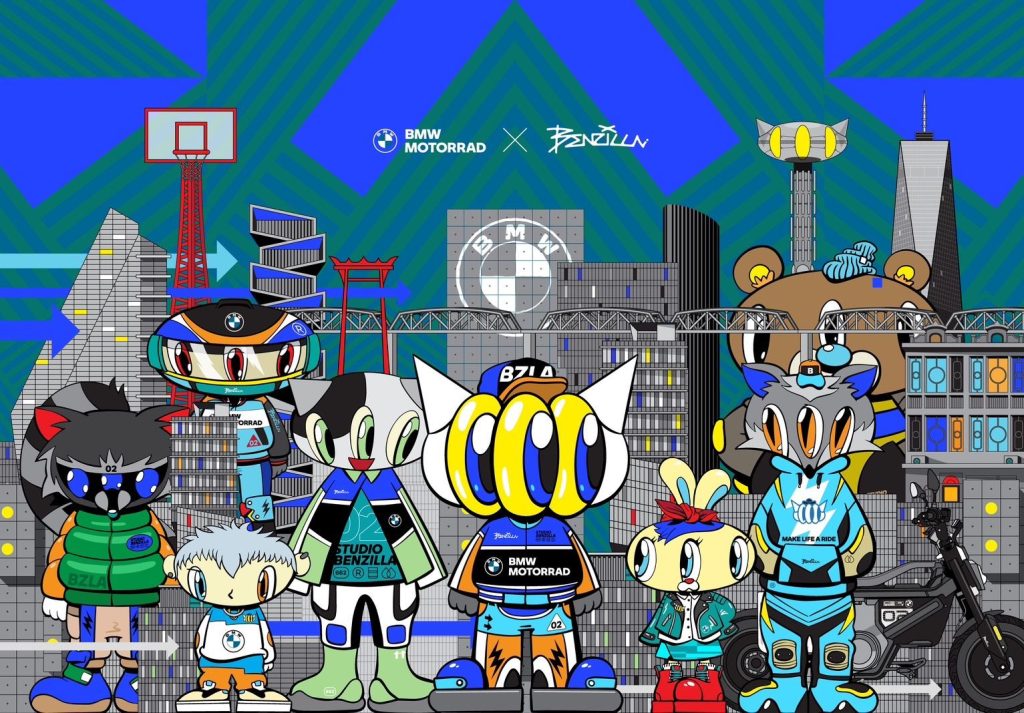
Culture Cartel: If you’re an established artist, you have a style that you’re known for. So these sorts, these weird projects force you to keep evolving and developing.
Benzilla: And after that, you will get better.
Culture Cartel: What is a dream collaboration brand collaboration you would love to work on if you could work with any brand?
Benzilla: NASA. I hope I can paint a spaceship?!
Hopes for Southeast Asian streetwear style
Culture Cartel: If you can look into the future, maybe in the next five years, what trends do you predict in the world of street wear?
Benzilla: People in Southeast Asia, like Singapore or Thailand or Taiwan or areas around us, have courage to dress more extreme, like more fun. Because it’s like a uniform for now and very safe.
But I think the next five 10 years will be totally different because new fashion designers are coming up and they have the courage to do something very niche.
If you look at Japan, teenagers in Japan have their own style. They have like a subculture. So maybe next five years we will be more fun in fashion.
I visited Singapore many times and it looks like Bangkok, same style. Because it’s hot, so everybody likes t-shirt and shorts. We share this hot, humid, tropical style. I hope the new designers find new ways to dress in humid weather. Please!
